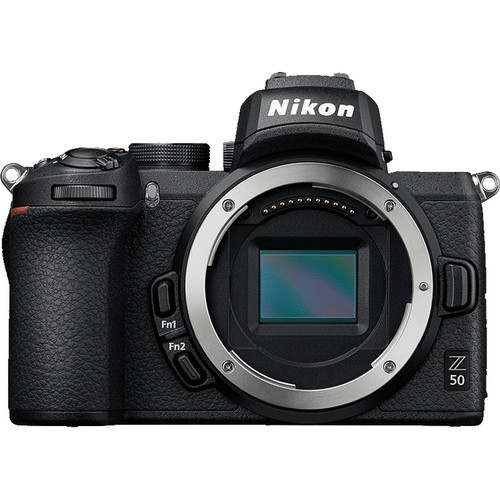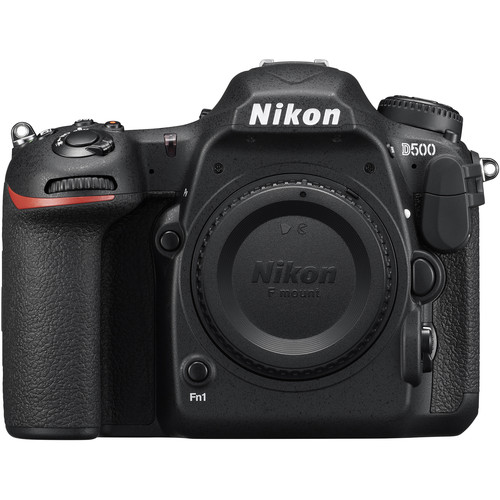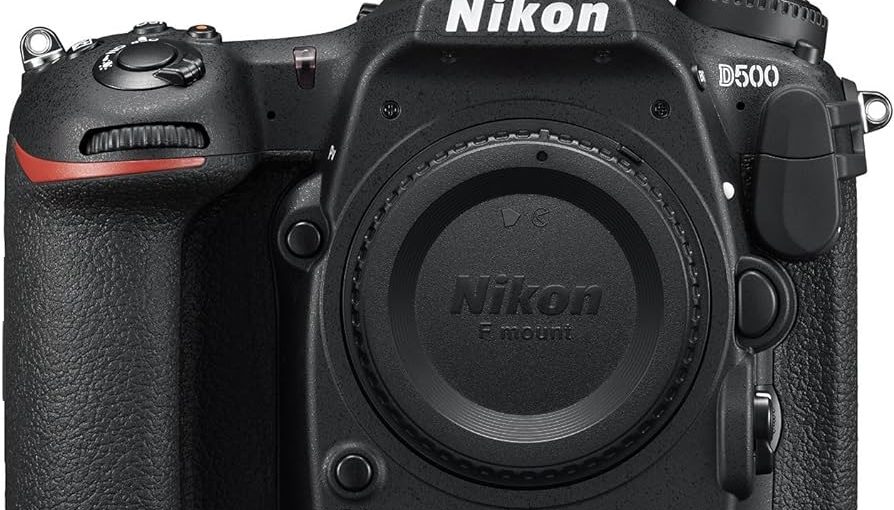Nikon Z50 Vs D500 : Unleashing the Power
The Nikon Z50 and D500 are both high-performing cameras, with the Z50 offering the advantage of shooting stills in a lossless compressed raw format for more efficient storage.
Table of Contents
- Nikon Z50 Vs D500
- 1. Design And Build Quality
- 2. Imaging Performance
- 3. Autofocus And Speed
- 4. Video Capabilities
- 5. Display And Viewfinder
- 6. Connectivity Options
- 7. Battery Performance
- 8. Lens Compatibility
- 9. Price And Value For Money
- Frequently Asked Questions On Nikon Z50 Vs D500
- Nikon D500 Sample Images
- Is Z50 Better Than D500?
- Is The Nikon Z50 Good For A Professional?
- Is The Nikon Z50 Any Good For Wildlife?
- Who Is Nikon Z50 Aimed At?
- Conclusion
- CallofPhotography
Nikon Z50 Vs D500
1. Design And Build Quality
The Nikon Z50 offers impressive design and build quality, with features like a lossless compressed raw format for efficient storage of high-quality stills. Its superior construction ensures durability and reliability for photographers.
| Design and Build Quality | |
|---|---|
| Nikon Z50: Sleek and compact design | D500: Robust and weather-sealed construction |
| The Nikon Z50 features a sleek and compact design, making it lightweight and portable. Its slim profile allows for easy handling and comfortable shooting on-the-go. | The D500, on the other hand, boasts a robust and weather-sealed construction, ideal for photographers who require durability and protection in challenging shooting conditions. |
| “Comparison of size, weight, and ergonomics” |
2. Imaging Performance
| Nikon Z50 | D500 |
|---|---|
| High-resolution 20.9 MP APS-C sensor | Pro-level 20.9 MP DX-format sensor |
The imaging performance of the Nikon Z50 and D500 is notable for their high-resolution sensors. The Z50 features a 20.9 MP APS-C sensor, while the D500 boasts a pro-level 20.9 MP DX-format sensor. Both sensors offer impressive image quality, capturing details with precision and clarity.
When it comes to dynamic range, both cameras excel in capturing a wide range of tones, ensuring accurate reproduction of highlights and shadows. Additionally, they deliver impressive low light performance, allowing photographers to shoot in challenging lighting conditions without compromising image quality. The advanced sensor technology of these cameras delivers excellent noise performance at high ISO settings.
In conclusion, the Nikon Z50 and D500 offer exceptional imaging performance with their high-resolution sensors, impressive dynamic range, and remarkable low light capabilities. Whether you’re shooting stills or videos, these cameras deliver outstanding image quality for photographers and professionals alike.
3. Autofocus And Speed
| Nikon Z50 | D500 | |
|---|---|---|
| Autofocus System | Fast and accurate hybrid autofocus system | Advanced 153-point autofocus system |
| Continuous Shooting Speed | ___ | ___ |
| Buffer Capacity | ___ | ___ |
The Nikon Z50 features a fast and accurate hybrid autofocus system, which ensures quick and precise focusing for capturing sharp images. On the other hand, the D500 boasts an advanced 153-point autofocus system, offering enhanced focus tracking capabilities for various shooting scenarios.
When it comes to continuous shooting speed and buffer capacity, both cameras have their own strengths. However, specific details are not available at the moment. Nonetheless, photographers can expect reliable performance and sufficient buffer capacity to capture a continuous stream of images, ensuring no crucial moments are missed.

Credit : www.static.bhphoto.com
4. Video Capabilities
Video capabilities are a key consideration when comparing the Nikon Z50 and D500. The Z50 offers the advantage of shooting stills in a lossless compressed raw format, which maximizes image quality while minimizing storage space. This feature sets it apart from the D500.
| Nikon Z50 Vs D500 – Video Capabilities | |
| Nikon Z50: 4K UHD video recording | |
| Nikon Z50 | D500 |
| Video Quality | Both cameras offer 4K UHD video recording capabilities. However, the D500 provides additional features such as 10-bit HDMI output, allowing for higher color depth and smoother gradations. This can be beneficial for professional videographers who require more advanced editing options. |
| Functionality | The Z50 offers various video functions including time-lapse and slow-motion recording, making it suitable for creative video projects. The D500, on the other hand, provides a wider range of customizable settings, allowing for more precise control over the video output. This can be advantageous for users who want to fine-tune their videos according to specific requirements. |
| Differences | When comparing video capabilities, the D500 stands out due to its additional features and advanced functionality. However, for general video recording purposes, the Z50 provides excellent 4K UHD video quality. |
5. Display And Viewfinder
| Camera | Display | Viewfinder |
|---|---|---|
| Nikon Z50 | Tilting touchscreen LCD | Electronic viewfinder |
| D500 | Fixed LCD | Optical viewfinder |
The Nikon Z50 comes with a tilting touchscreen LCD, which allows for flexible shooting angles and easy image review. The electronic viewfinder provides a high-resolution display, delivering a clear view of the composition. On the other hand, the D500 features a fixed LCD, limiting the options for shooting angles. However, the optical viewfinder offers a more traditional shooting experience, providing a real-time view of the scene. When comparing the resolution, the Z50 offers a higher resolution display than the D500, resulting in more detailed image preview. In terms of usability, the tilting touchscreen of the Z50 provides intuitive navigation and control, while the fixed LCD of the D500 may require some adjustments to find the desired viewing angle.
6. Connectivity Options
Nikon Z50 offers built-in Wi-Fi and Bluetooth connectivity, allowing users to easily transfer and share photos wirelessly with compatible devices. This feature enables quick and convenient image sharing, especially when on the go. On the other hand, the D500 comes with integrated Wi-Fi and an optional WT-7A transmitter. This transmitter enhances the camera’s wireless capabilities by enabling the use of remote control options. With the WT-7A transmitter, photographers can remotely control their camera settings and capture photos or videos from a distance. Both cameras provide efficient wireless connectivity options, but the D500 offers additional remote control capabilities. Whether you prefer the convenience of built-in Wi-Fi and Bluetooth or the expanded features of the optional transmitter, these connectivity options offer versatility and ease of use for photographers.
7. Battery Performance
| Camera Model | Battery Model | Battery Life | Charging Options |
|---|---|---|---|
| Nikon Z50 | EN-EL25 rechargeable Li-ion battery | Approximately 300 shots per charge | USB charging and optional EH-73P charging AC adapter |
| D500 | EN-EL15 rechargeable Li-ion battery | Approximately 1,240 shots per charge | MH-25a quick charger and optional EH-5b AC adapter |
The battery performance is an important aspect to consider when comparing the Nikon Z50 and the D500. The Nikon Z50 uses the EN-EL25 rechargeable Li-ion battery, which offers approximately 300 shots per charge. This camera supports USB charging and also provides the option to use an EH-73P charging AC adapter. On the other hand, the D500 uses the EN-EL15 rechargeable Li-ion battery, which offers a much higher battery life of approximately 1,240 shots per charge. The D500 comes with the MH-25a quick charger and also offers the option to use an EH-5b AC adapter. When it comes to battery performance, the D500 has a significant advantage over the Nikon Z50 in terms of battery life. However, the Z50’s USB charging option can be convenient for on-the-go charging.
8. Lens Compatibility
The Nikon Z50 offers an extensive lens compatibility, allowing photographers to use a wide range of lenses for versatile shooting options. In comparison, the D500 also provides a compatible lens system, ensuring seamless integration with existing Nikon lenses.
| Camera | Lens Compatibility |
|---|---|
| Nikon Z50 | Compatible with Z-mount lenses |
| D500 | Compatible with Nikon F-mount lenses |
When it comes to lens compatibility, the Nikon Z50 is designed to work with Z-mount lenses, while the D500 is compatible with Nikon F-mount lenses. This means that if you already have a collection of F-mount lenses, the D500 may be a more suitable choice for you, as you can continue to use your existing lenses without needing to purchase new ones. On the other hand, if you are starting fresh or are interested in the new Z-mount lenses, the Z50 provides a great opportunity to explore the latest lens options. With its compact size and mirrorless design, the Z50 offers a lightweight and portable option for photographers. Ultimately, the choice between the two cameras will depend on your specific needs and lens preferences.

Credit : www.static.bhphoto.com
9. Price And Value For Money
|
The Nikon Z50 is an entry-level mirrorless camera that offers an affordable price point. With its compact and lightweight design, it is perfect for amateur photographers or those who are just starting out in the world of photography. The camera provides impressive image quality and features a 20.9-megapixel APS-C sensor, allowing for detailed and sharp images. On the other hand, the Nikon D500 is a pro-level DSLR camera with a higher price tag. It is designed for professional photographers who require advanced features and superior performance. The D500 features a 20.9-megapixel APS-C sensor and offers exceptional image quality, particularly in low-light conditions. When comparing the two cameras in terms of price and value for money, the Nikon Z50 clearly comes out on top for those who are on a budget. It provides excellent performance and features at a more affordable price, making it a great choice for beginners or hobbyists. However, if budget is not a constraint and you require professional-level features and performance, the Nikon D500 is the way to go. It offers superior autofocus, a faster continuous shooting speed, and a more robust build quality, making it suitable for professional photographers who demand the best. |

Credit: www.kickstarter.com
Frequently Asked Questions On Nikon Z50 Vs D500
Nikon D500 Sample Images

Credit : www.3.img-dpreview.com
Is Z50 Better Than D500?
Yes, the Z50 is better than the D500 due to its ability to shoot stills in a lossless compressed raw format, offering the advantages of shooting raw while using less storage space.
Is The Nikon Z50 Good For A Professional?
Yes, the Nikon Z50 is good for a professional as it can shoot stills in a lossless compressed raw format, providing the advantages of shooting raw with less storage space.
Is The Nikon Z50 Any Good For Wildlife?
The Nikon Z50 is a great camera for wildlife photography. It has a lossless compressed raw format that gives all the benefits of shooting raw with less storage space. You can capture stunning wildlife shots with this camera.
Who Is Nikon Z50 Aimed At?
The Nikon Z50 is aimed at photography enthusiasts who want a compact and versatile camera. It offers high-quality images, including lossless compressed raw format, without taking up too much storage space.
Conclusion
To wrap up, the Nikon Z50 and D500 are both exceptional cameras with their unique features. The Z50, being a mirrorless camera, offers a lightweight and compact design, while the D500 provides a more robust build and superior autofocus system.
Ultimately, your choice should be based on your specific photography needs and preferences. Whether you’re a beginner or a seasoned professional, both cameras will deliver outstanding image quality and performance. Happy shooting!
I am a photography enthusiast turned blogger, sharing my passion and expertise on her blog, "CallofPhotography." Growing up surrounded by nature, I developed a love for capturing moments through my lens. After studying Fine Arts with a focus on photography, I launched my blog to share tutorials, gear reviews, and my own photographic work. Through engaging storytelling, I invites readers to join her visual journey, inspiring and empowering photographers of all levels worldwide.


